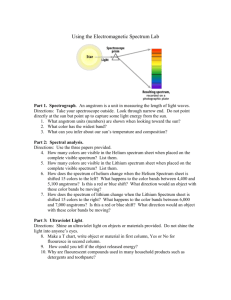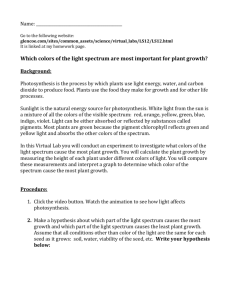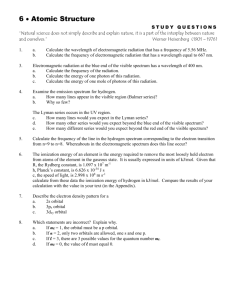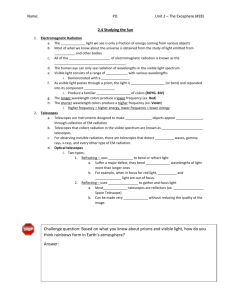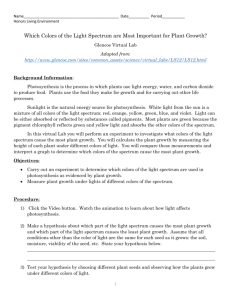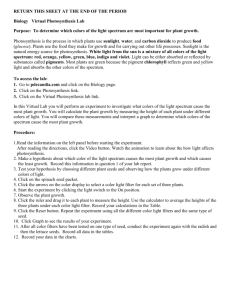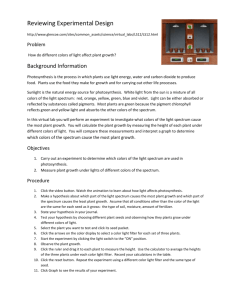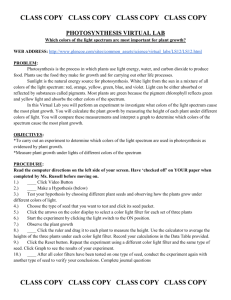Light Laws Review Reading
advertisement
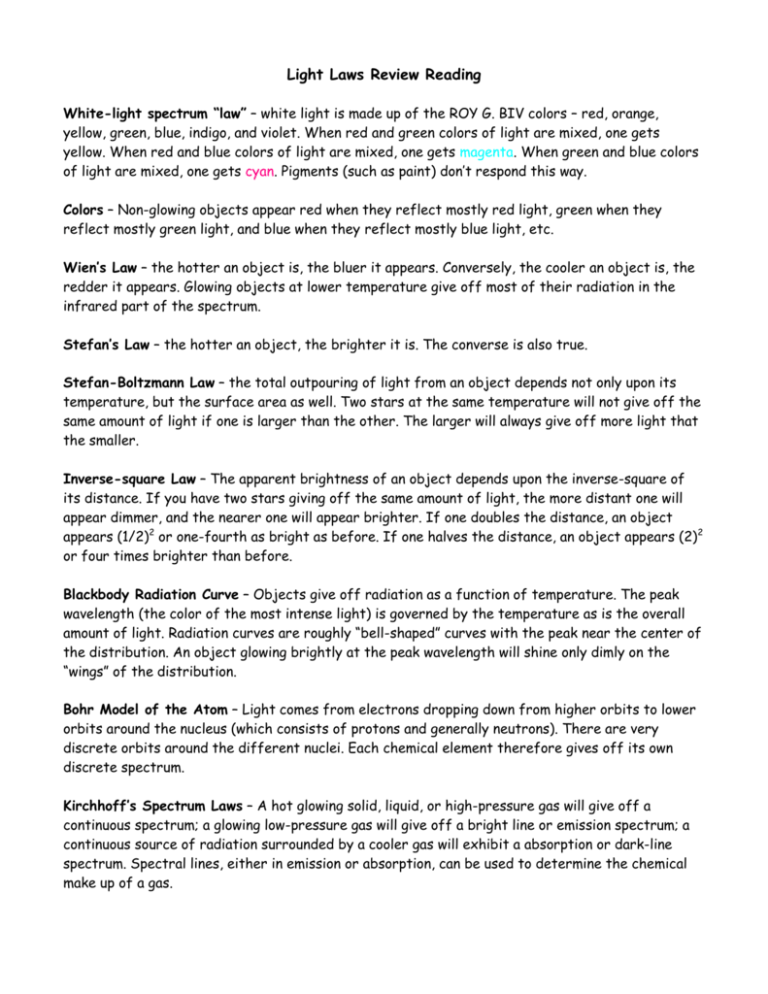
Light Laws Review Reading White-light spectrum “law” – white light is made up of the ROY G. BIV colors – red, orange, yellow, green, blue, indigo, and violet. When red and green colors of light are mixed, one gets yellow. When red and blue colors of light are mixed, one gets magenta. When green and blue colors of light are mixed, one gets cyan. Pigments (such as paint) don’t respond this way. Colors – Non-glowing objects appear red when they reflect mostly red light, green when they reflect mostly green light, and blue when they reflect mostly blue light, etc. Wien’s Law – the hotter an object is, the bluer it appears. Conversely, the cooler an object is, the redder it appears. Glowing objects at lower temperature give off most of their radiation in the infrared part of the spectrum. Stefan’s Law – the hotter an object, the brighter it is. The converse is also true. Stefan-Boltzmann Law – the total outpouring of light from an object depends not only upon its temperature, but the surface area as well. Two stars at the same temperature will not give off the same amount of light if one is larger than the other. The larger will always give off more light that the smaller. Inverse-square Law – The apparent brightness of an object depends upon the inverse-square of its distance. If you have two stars giving off the same amount of light, the more distant one will appear dimmer, and the nearer one will appear brighter. If one doubles the distance, an object appears (1/2)2 or one-fourth as bright as before. If one halves the distance, an object appears (2)2 or four times brighter than before. Blackbody Radiation Curve – Objects give off radiation as a function of temperature. The peak wavelength (the color of the most intense light) is governed by the temperature as is the overall amount of light. Radiation curves are roughly “bell-shaped” curves with the peak near the center of the distribution. An object glowing brightly at the peak wavelength will shine only dimly on the “wings” of the distribution. Bohr Model of the Atom – Light comes from electrons dropping down from higher orbits to lower orbits around the nucleus (which consists of protons and generally neutrons). There are very discrete orbits around the different nuclei. Each chemical element therefore gives off its own discrete spectrum. Kirchhoff’s Spectrum Laws – A hot glowing solid, liquid, or high-pressure gas will give off a continuous spectrum; a glowing low-pressure gas will give off a bright line or emission spectrum; a continuous source of radiation surrounded by a cooler gas will exhibit a absorption or dark-line spectrum. Spectral lines, either in emission or absorption, can be used to determine the chemical make up of a gas.

